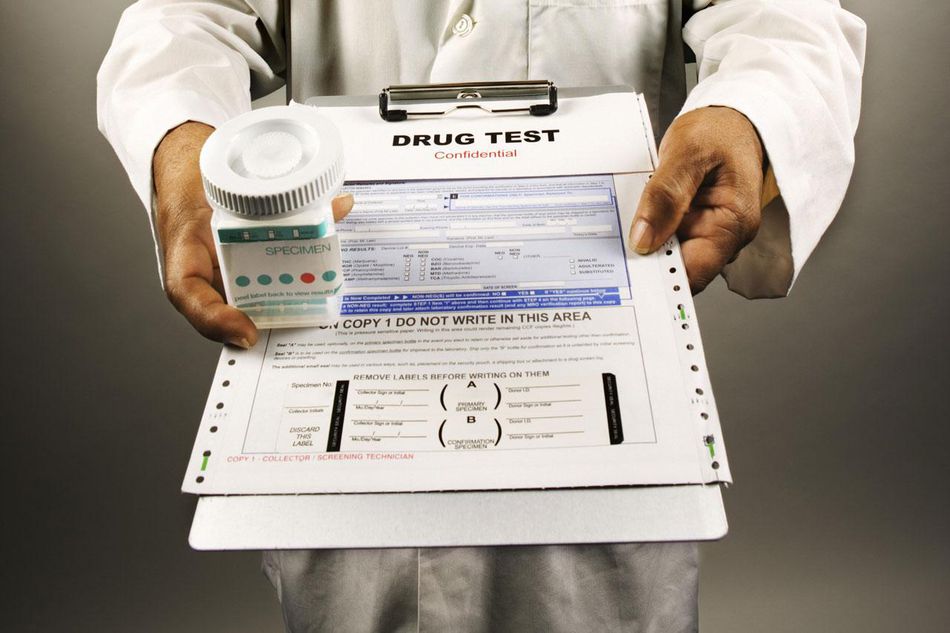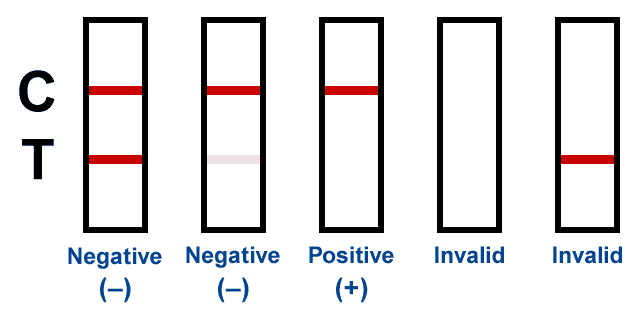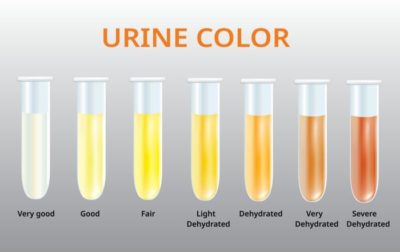
Use our employee drug testing guide to help inform your policies and procedures when testing new hires, and completing random drug testing in house.
Procedure
- Donor provides urine specimen in the cup and screws the cap on.
- Operator checks the cap for tightness, starts timer
- Remove peel off label
- Check temperature strip on back. A green color will appear to indicate the temperature, proper range is 90°-100°F
- At 5 minutes read the results. Presence or absence of drugs is indicated by the colored bands in the results area.

Tips for Successful Employee Drug Testing
When starting an employee drug testing program, begin with a consistent operating procedure that is detailed in a manual. Decide if drug testing will be completed randomly, or whether the company will only drug test employees after accidents and when they’re suspected of being intoxicated on the job.
Check your local, state and federal laws for guidelines on drug testing.
During the hiring process management or human resources should have every new employee sign a drug testing compliance form that outlines the rights and responsibilities of every employee as it pertains to the company drug testing policy. This will help in the unlikely event a terminated employee engages in legal action.
Always Observe Employee Drug Screens
When your patient or employee knows they are going to fail a drug test they will try anything to get around it. If you aren’t observing drug screens, then you can never say that your subject didn’t substitute a clean sample for their own urine. One study found that when staff at an outpatient rehab started witnessing drug screens positive results almost doubled from 25% to 42%.
Most facilities that do frequent point of care drug screening will have a bathroom that is designed for observing drug screens. Technicians dye the water in the toilet, remove doors, and restrict sink access. Place a mirror for an observer to confirm that the sample did indeed come from the patient and not a small bottle concealed in their underwear.
Always Send Positive Drug Screen Samples to a Lab
Point of care drug screening lowers the cost of a company drug testing program, but isn’t intended to replace confirmation from a licensed laboratory.
A drug testing cup can only show that a subject has levels of a certain metabolite in their urine that is above a designated cutoff. It doesn’t give any indication of the amount of that metabolite, the time frame when drug use likely occurred, the amount of drugs used or even the source of the metabolite.
A positive drug screen in your office just means that subject has likely used drugs in the past few days. You should send their sample to a lab for confirmation. The possibilities of a false positive or faulty test increases the liability of making a bad decision based on evidence that doesn’t meet a burden of proof.
Maintain a Secure Chain of Custody
From the time you collect the sample from an employee you make sure that the sample is not adulterated, contaminted, or otherwise tampered with until a laboratory can confirm the results.
Take the employee to a designated waiting area where you can set the collection cup and wait for the test strips to indicate whether a sample is positive or negative. It is important to have the employee wait with you so they can confirm that you have not tampered with their sample.
If the sample comes back positive you will need to seal it, package it and fill out paperwork to send it to a lab. Until someone packages the sample you should not let it out of your sight, and do not leave the package unattended until you pass custody on to the shipping agency.
It’s very unlikely that an employee that had a legitimate positive drug screen will pursue legal action, but you should treat every case as if you plan on being deposed in court. An employee that is the victim of a false positive will appreciate your diligence in maintaining strict control of their specimen so the lab can prove their innocence.
Store Unused Drug Tests in a Cool Controlled Environment
Test strips depend on chemicals present in the strips to react to metabolites of the target substance.
If you remember your science class in high school, every experiment called for a high level of control of different variables. In drug testing the uncontrolled variable is the amount of drugs each subject has consumed recently; all other variables need to be tightly controlled.
High or low temperatures can cause the chemicals in the test strips to alter their molecular structure which will lead to a different reaction to the target metabolites.
We take special precautions to make sure that we store our tests at 70 degrees Fahrenheit in our facilities and choose the quickest shipping methods to limit exposure to uncontrolled temperatures during transport. Be careful not to store tests in direct sunlight which can raise the temperature of the tests.
Detect Dilution of Urine Samples
One of the most common techniques employees and patients use to alter drug screen results is diluting their urine in their own body by drinking excessive amounts of water or tea prior to testing. This can cut detection times down tremendously.
Doctors have long recommended that adults drink 4-8 glasses of water everyday; a healthy adult male should have urine that is colored like light lemon juice – a slight yellow tint. A uine sample that is completely clear it should be sent to the lab to test for dilution.

Instruct any subject that consistently provides diluted samples that further dilution will result in a failed screen, or use an alternate sample (blood, saliva or hair follicle) at the employee’s expense.
What is the Most Common Pre-Employment Drug Test?
The most common type of employment drug test is urinalysis, usually a drug test cup. The most common test is a 10 panel drug test, which is specifically designed for pre-employment applications. Mouth swab drug tests are becoming more common because they’re non-invasive and have shorter detection times.

